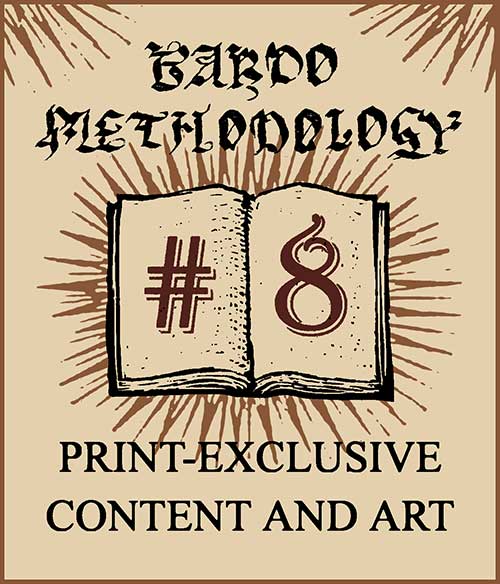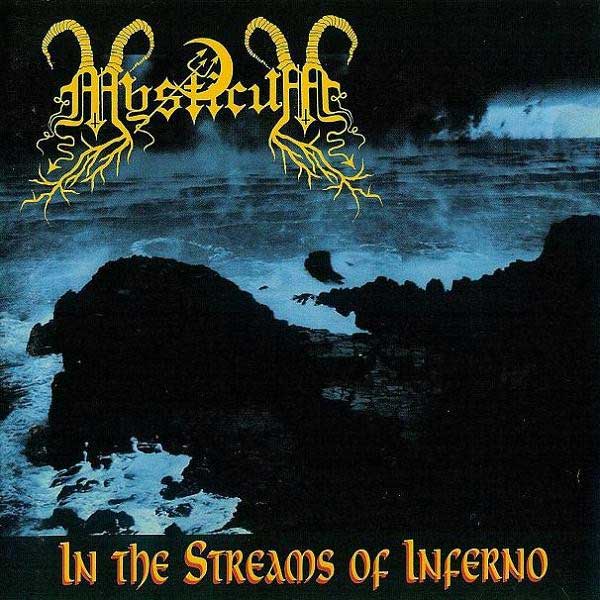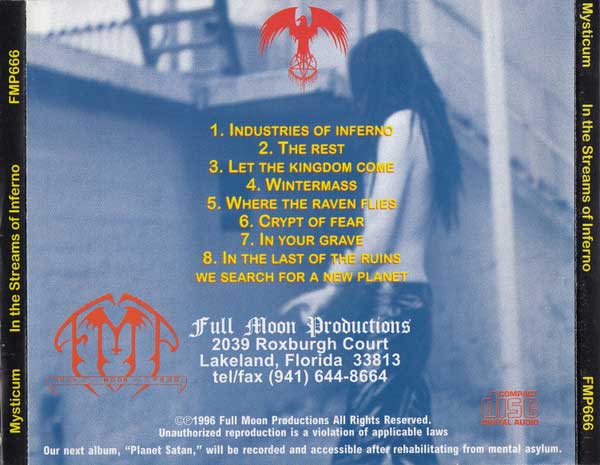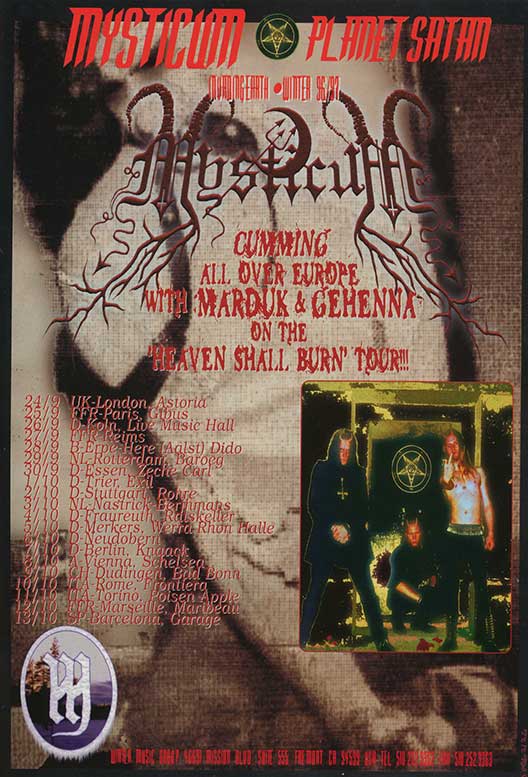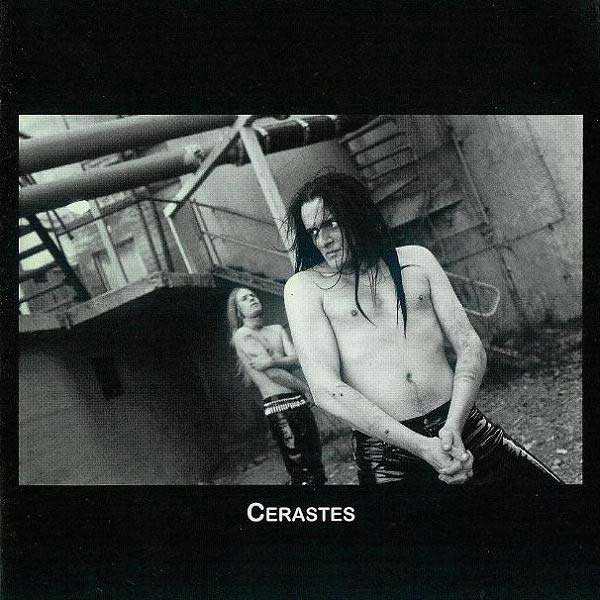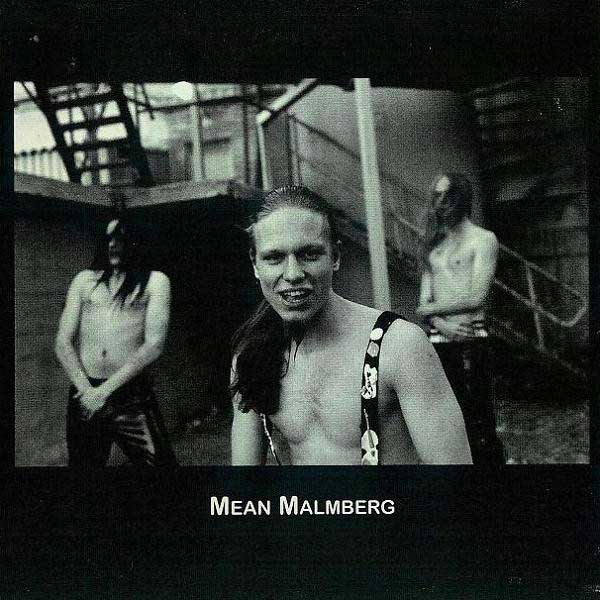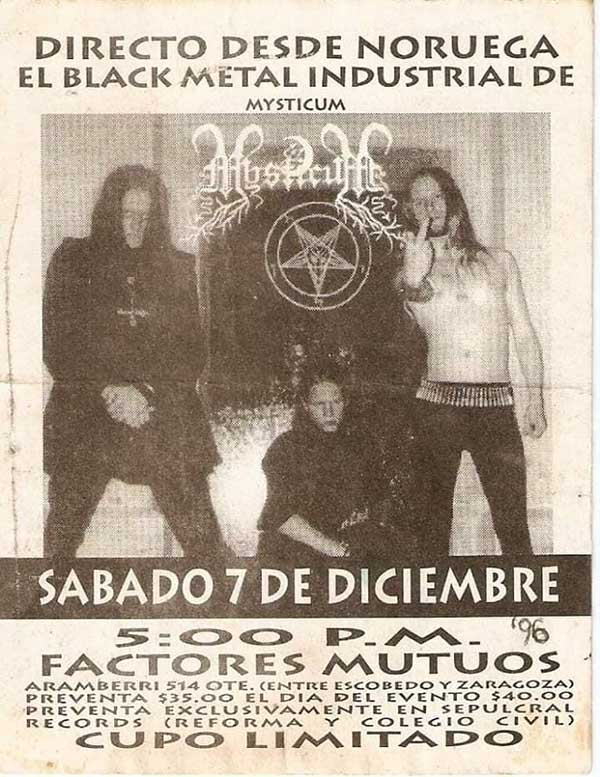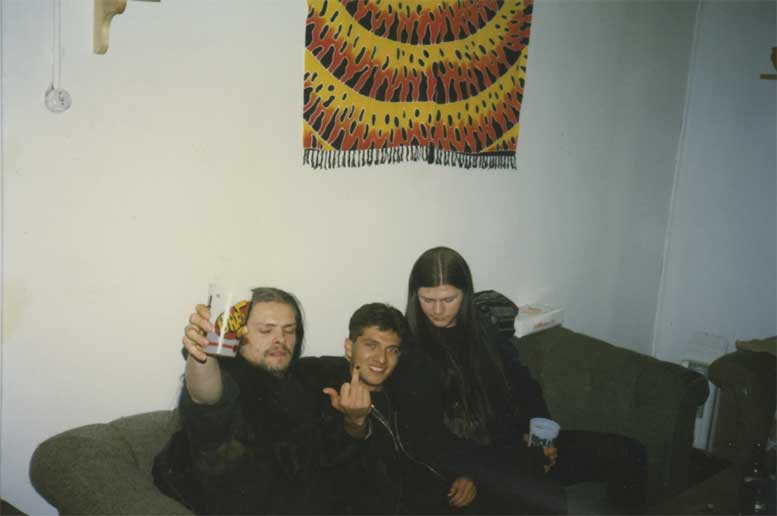Full Moon Productions V
2025-09-02
by Niklas Göransson
In 1996, Full Moon Productions carved its name into black metal history. With Mysticum’s infernal machinery, the label issued one of the era’s most singular albums – a mechanised hymn of madness born from the ashes of Deathlike Silence.
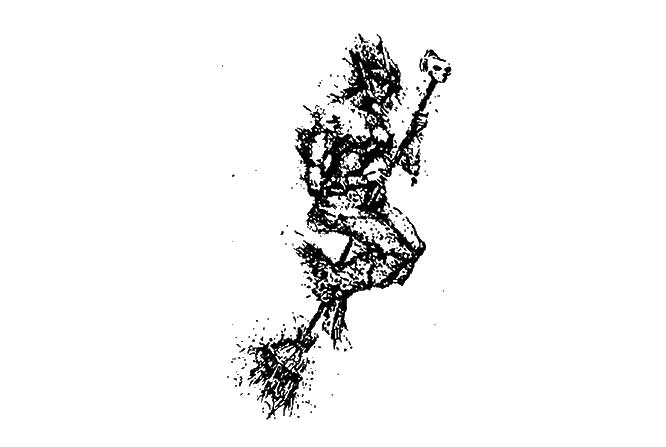
JON JAMSHID: Our initial budget for the second HADES album was about eight grand – already a lot. But by the time they got through mixing, mastering, layouts, everything… we were $12,000 in before even pressing the record. Endless expenses. Then I had to turn around and prepare to release both ABRUPTUM and MYSTICUM.
Norwegian black metal band HADES recorded “The Dawn of the Dying Sun” at Grieghallen, Bergen, in the summer of 1996. Shortly beforehand, frontman Jørn Inge Tunsberg had been released from a two-year prison sentence for burning Old Åsane Church with BURZUM’s Varg Vikernes on Christmas Eve 1992.
Around this period, Full Moon Productions also issued ABRUPTUM’s third album, “Vi Sonus Veris Nigrae Malitiaes”. Jon’s connection with the band’s founder, Tony ‘IT’ Särkkä, dated back to their letter correspondence in the late 1980s.
JON: Tony was a solid ally – genuinely supportive. He seemed to view F.M.P. as the new Deathlike Silence and urged me to take on bands left in limbo after Euronymous died. MYSTICUM, for example, were set to release “Where the Raven Flies” on D.S.P.
Originally formed as SABAZIOS, the Norwegian trio performed a fusion of black metal with harsh electronics and industrial rhythms that set them apart from the rest of the scene. They released the “Wintermass” demo in early 1993 before rebranding as MYSTICUM and recording “Medusa’s Tears” that July.
After hearing the demos and visiting MYSTICUM’s rehearsal space, Euronymous signed them to Deathlike Silence Productions. In fact, he was impressed enough to gift vocalist and guitarist Cerastes his crucifix, the one seen in the classic MAYHEM promo shots.
Flyers circulated announcing the forthcoming debut, “Where the Raven Flies”, but the murder of Euronymous left MYSTICUM without label backing, and the recording was shelved. The first signs of life came in June 1994, when Dutch underground label Necromantic Gallery Productions issued an unused track from the “Medusa’s Tears” session on a split EP with ULVER.
JON: I’d been hearing a lot of talk – both through Petrified and word of mouth – about this Norwegian band doing something radically different. MYSTICUM weren’t traditional black metal; they had an industrial edge, distinctive vocals, and an overall style that stood out. Mårten from ALGAION sent me their demos and some advance tracks.
In 1995, the short-lived Swedish label Infortunium Records – run by members of PUISSANCE and ALGAION – released a tape compilation of MYSTICUM demo material. That same year, the band self-released a promo titled “Piss Off!!!”, featuring tracks later found on their debut.
JON: I thought the music was phenomenal, but the band had a reputation for being difficult, and their D.S.P. connection brought a certain notoriety. Plenty of labels were after MYSTICUM, so I needed people in their orbit, like Tony, to vouch for me and help persuade them to sign with F.M.P.
With ABRUPTUM on Deathlike Silence, IT was deeply embedded in the early Norwegian scene. He regularly visited Helvete, Euronymous’ infamous Oslo shop, and knew many of the key players personally.
JON: We had to work through everything – royalties, studio budget, artwork – right down to the smallest detail. Nothing was taken lightly. The negotiations dragged on for well over a year before we finally reached an agreement and signed MYSTICUM.
MYSTICUM recorded their debut album at Bondi Lydstudio in early 1996. That autumn, Full Moon Productions issued FMP666, “In the Streams of Inferno” – arguably the label’s most iconic title.
JON: The record itself was fucking killer. A lot of MYSTICUM’s demo material made it onto their full-length, and they kept that same harsh, aggressive edge – exciting as hell to have on F.M.P. “In the Streams of Inferno” would’ve been one of the few releases I pressed in large numbers right from the start.
Normally, Full Moon would run a thousand copies, but pre-orders and distro interest were so strong that Jon pushed the first pressing to 3,000.
JON: Osmose, House of Kicks, Plastic Head, Malicious – everyone wanted big quantities, so we had to set aside large batches for them. As soon as the album dropped, we were already placing a reorder. It was also the first time a touring agency reached out to us.
In late 1996, MYSTICUM joined MARDUK for the Heaven Shall Burn Tour across Europe, organised by Belgian agency Metallysee.
JON: Until then, I’d never even considered touring; there simply wasn’t enough mainstream interest in black metal for booking agencies to even take notice. But by ‘96, the scene had blown up, and bands like MYSTICUM were suddenly in demand.
It certainly sounds like a valuable opportunity in terms of exposure – but I do wonder how the average MARDUK fan of 1996 would’ve responded to MYSTICUM’s industrial sound.
JON: Anything tied to Euronymous carried weight; just knowing MYSTICUM had that connection drew attention on its own. MARDUK were a killer, well-established band, so adding an old Deathlike Silence act to the bill worked for both sides. Sure, the tour boosted sales – but honestly, the buzz was already there.
Jon’s wide network of distribution partners played a crucial role in MYSTICUM’s success. By then, every notable black metal label also ran its own mail-order, stocked with traded titles.
JON: Think of every country as its own black metal hub. Rather than having people in Germany ordering from F.M.P., it made more sense to establish a local distributor there. I’d ship my stock to No Colours, for example, and Europeans could buy directly from them.
In return, anyone in the US who wanted No Colours’ releases could get them from Full Moon Productions. This kind of collaborative distribution has always been the lifeblood of the underground – a symbiotic ecosystem where smaller entities sustain one another.
JON: None of us – labels like F.M.P., Malicious, No Colours – were sitting on piles of cash. We made just enough to keep going, which is why bulk trading was so efficient. When I put out the MYSTICUM album, I’d send five hundred copies to Malicious and take the same number of GORGOROTH in return.
In 1996, F.M.P.’s German partner Malicious Records reissued GORGOROTH’s debut, “Pentagram”, followed by their second album, “Antichrist”.
JON: Seeing GORGOROTH return to the roots felt reassuring. Norway was getting oversaturated – too many new, unremarkable bands drifting toward a more symphonic, polished sound. As the genre edged toward mainstream acceptance, I kept hunting for raw, ugly, dirty black metal.
SATYRICON’s “Nemesis Divina”, released in April 1996, became a watershed moment for black metal – according to a 2016 interview with Satyr, sales climbed past 50,000, then 80,000, eventually hitting 100,000. Unheard of for the genre.
A few months later, CRADLE OF FILTH released “Dusk… and Her Embrace” through Music for Nations, selling around 400,000 copies worldwide. With their gothic imagery and orchestral sound attracting a larger audience than most contemporaries, Metal Hammer would later go on to describe them as ‘the most successful British metal band since IRON MAIDEN’.
EMPEROR’s debut album, released two years earlier, remained a benchmark for symphonic black metal; but while widely influential, they were still somewhat of a cult act. DIMMU BORGIR’s second album – the 1996 “Stormblåst”, still sung in Norwegian – was released on Cacophonous Records where CRADLE OF FILTH had started out, moving an estimated 20,000 copies.
While GORGOROTH would later rise to the forefront of Norwegian black metal, their Malicious-era standing was modest compared to the symphonic heavyweights.
JON: I had distribution partners all over Europe: Russia, Ukraine, you name it. It was a smart, mutually beneficial setup where we promoted each other’s releases. In the F.M.P. catalogue, I’d even run ads for Malicious, No Colours, Osmose – anyone in the network – so people could discover new bands.
When shipping their releases to Full Moon Productions, Jon’s European collaborators would typically include a large batch of promo CDs for review mail-outs.
JON: Here’s a funny story. One day, I get a letter from some guy named Joe – says he’s starting a ‘zine. Classic, right? ‘Send me a promo packet for Malicious Records.’ I wrote back, ‘You haven’t put out a single issue, you don’t even give me the name of your fanzine, but you want free material? Go fuck yourself.’
This probably sounds all too familiar to anyone who’s been in the periphery of a 1990s band or label mail-order: endless requests from people who are ‘about to start a fanzine’ requesting review copies.
JON: Not long after, Gerrit from Malicious faxes me – ‘Hey, this guy is complaining about how you wouldn’t send promos. He’s insisting I force you to give him a free CD.’ So, I wrote Joe a letter: ‘Kill yourself!’, slipped a razor blade inside, and mailed it. Never heard back. Then, on tour with MYSTICUM, we hit New York. Guess who’s there? Fucking Joe.
Towards the end of 1996, MYSTICUM crossed the Atlantic for a planned run of US and Mexican dates.
JON: Joe came up to me, pale as a ghost – ‘Hey man, the letter you sent really fucked me up. I was already suicidal, and that razor blade shit nearly pushed me over the edge.’ I told him, ‘Look, you were demanding free merch from a small label. Every promo packet costs money.’ Long story short, we talked it out and buried the hatchet.
When MYSTICUM reached US soil in late November 1996, the plan was to hit North America first, followed by a week of shows in Mexico.
JON: We had to coordinate with two separate organisers. Tomas Pascual from Metal Maniacs handled the US dates, and a Mexican promoter booked the rest. MYSTICUM used a drum machine live, and I was the one controlling it – cueing on and off while they played. Pretty interesting setup.
The US leg ran into logistical problems early on, with several dates being cancelled. MYSTICUM’s final North American appearance was Deathstock III, where they shared the bill with bands like CANNIBAL CORPSE, IMMOLATION, BRUTAL TRUTH, ANGELCORPSE, and DYING FETUS.
JON: Walking through the crowd, I suddenly saw one of the CANNIBAL CORPSE guys strangling Tomas Pascual. I ran over and said, ‘Hey, take it easy.’ He let go, and Tomas bolted into the bathroom. I followed and found him cowering in one of the stalls. I knocked and asked, ‘Are you okay?’ He started whining about being attacked, but I just went, ‘You need to hand over our money now.’
JON: We were supposed to be paid for the entire tour that night. I don’t recall the exact figure, but let’s say the agreement was $8,000 – which, mind you, only covered airfare. Tomas handed me an envelope and ran off. I locked myself in a stall and counted the cash: several grand short. I pocketed it and went looking for him.
JON: After MYSTICUM finished, we packed up, got in my car, and drove to Tomas’ house. I knocked – his mother answered, claiming he wasn’t home, but I could see his head poking out from behind the wall. I told her, ‘Look, you need to get him, or there’s gonna be a problem. We’re not leaving until he pays up.’
JON: Right then, Tomas tried to slam the front door. As he reached for the handle, I grabbed his wrist and pulled him down the stairs. The MYSTICUM guys were waiting at the bottom and just laid into him – kicking, punching, the whole nine yards. Tomas scrambled back upstairs and said he’d get the rest of the money. Sure enough, he came back with the cash, handed it over, and we left.
How was Mexico?
JON: Oh, they’re total die-hards. Every show we did down there was absolutely packed. And here’s the strange part: despite F.M.P. barely selling any albums in Mexico, everyone seemed to know the songs <laughs>. That shows the power of tape-trading culture – music spread far and wide, even if the official sales didn’t reflect it.
The anthology Petrified: Under the Full Moon recounts a disturbing scene at MYSTICUM’s Saltillo show involving the openers, BLACK VOMIT. I’d always assumed the whole ‘shooting heroin in the eyes’ thing was an urban myth – but Jon reportedly saw it firsthand.
JON: I certainly did. While MYSTICUM were onstage, two BLACK VOMIT guys were sitting at a table with bloody tears streaming down their faces. I asked one of them, ‘What the fuck is going on?’ He told me they were injecting drugs directly into their tear ducts – supposedly because it hits faster that way.
If there was ever a time to shoot up heroin, I suppose a MYSTICUM backstage would be it. Back then, they were a flagship band of the ‘Never Stop the Madness’ black metal ethos – known as staunch drug fiends and general maniacs.
JON: Maniacs is fair, but not while touring. On the road, MYSTICUM were completely professional, methodical about everything. I found them pleasant and surprisingly level-headed. However, when I visited Norway and spent time with them, there was more chaos. They took me to an abandoned mental institution, and we tore through it – smashing windows, wreaking havoc.
In early 1997, Jon made his first trip to Scandinavia, starting in Sweden.
JON: I went to Åtvidaberg and stayed with Mårten (ALGAION). He wanted to show me around, so I was introduced to a bunch of people – guys from MARDUK, DARK FUNERAL, and several other bands. We travelled a bit together, then I spent some time with Emil Nödtveidt (SWORDMASTER) and met even more people through him.
log in to keep reading
The second half of this article is reserved for subscribers of the Bardo Methodology online archive. To keep reading, sign up or log in below.

